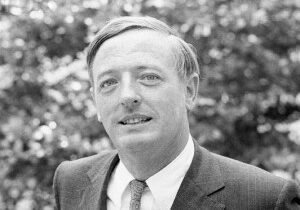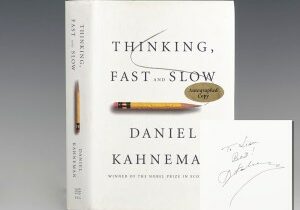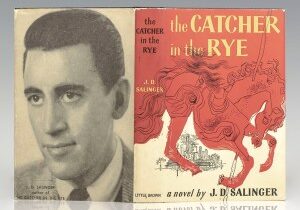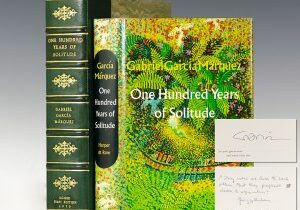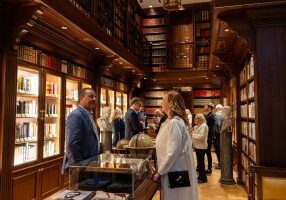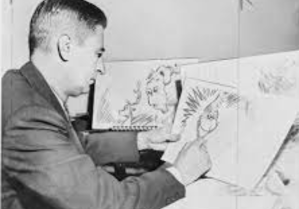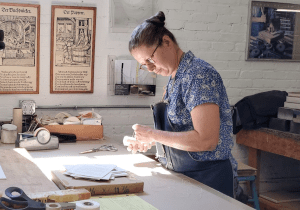One of the most enduring stories of the modern era, J.R.R. Tolkien’s The Hobbit remains one of the most popular stories in the English language and its publication in 1937 sparked a creative explosion in the genre of speculative fiction, paving the way for its sequel The Lord of the Rings and numerous adaptations for the stage and screen. Tolkien’s first novel, the book has never been out of print and has seen an impressive revival in interest in recent years, primarily due to the high fantasy film series directed by Peter Jackson.
“In enchanted Middle-earth, a small, comfort-loving Hobbit is awakened from his slumbers by a visitor who tells of lost treasure. Before Bilbo Baggins returns home again, he journeys past wizards and elves, talkative trees and treasure-guarding dragons, all swirling in cosmic battle between good and evil. J.R.R. Tolkien’s fully realized fantasy world won over generations of children, and dazzled adults with its deft interweaving of medieval legend and made-up languages, maps, and creatures. Tolkien legitimized the modern fantasy genre, and provided the 1960’s counterculture with antiwar, back-to-Eden icons” (NYPL Books of the Century 199).

Published on September 21, 1937, the first issue of The Hobbit had a print run of only 1500 copies and was completely sold out by December 15th of that year. The first edition can be identified by the copyright statement which reads, “First Published in 1937″ with no mention of subsequent printings and by the well-know correction on the rear flap of the dust jacket, in which “Dodgson” is incorrectly spelled “Dodgeson.” “It may have been a surprise to its publishers that a work as sui generis as The Hobbit should have been a popular success, but once it was a success there can have been no surprise in the clamor for a sequel. Tolkien had opened up a new imaginative continent, and the cry now was to see more of it” (Shippey, 49).
A number of additional issue points exist throughout the text as per Wayne Hammond’s J.R.R. Tolkien: A Descriptive Bibliography:
1. page 14, lines 17-18, ‘find morning’, for ‘fine morning’.
2. page 17, lines 29-30, “So you have got here at last! what (for That) was what he was going to say’.
3. page 25, line 11, ‘more fierce then fire’ for ‘more fierce than fire’.
4. page 62, lines 2-3, ‘uncomfortable palpitating’ for ‘uncomfortable, palpitating’
5. page 62, line 31, ‘their bruises their tempers and their hopes’ for ‘their bruises, their tempers and their hopes’.
6. page 64, line 21, ‘where the thrush knocks’ for ‘when the thrush knocks’.
7. page 85, line 10, ‘far under under the mountains’ for ‘far under the mountains’.
8. page 104, line 17, ‘back tops’ for ‘black tops’.
9. page 147, line 16, ‘nor what you call’ for ‘not what you call’.
10. page 183, line 26, reversed double quotation marks for the word ‘Very’.
11. page 205, line 32, ‘dwarves good feeling’ for ‘dwarves’ godd feeling’.
12. page 210, line 29, ‘above stream’ for ‘above the stream’.
13. page 215, line13, ‘door step’ for ‘doorstep’.
14. page 216, line 4, ‘leas’ for ‘least’
15. page 229, lines 16-17, ‘you imagination’ for ‘your imagination’.
16. page 248, line 32, ‘nay breakfast’ for ‘any breakfast’

First edition, first issue of Tolkien’s classic tale, “among the very highest achievements of children’s authors during the 20th century” (Carpenter & Pritchard, 530), one of only a handful of presentation copies reserved for Tolkien to give to family members, colleagues and close friends.
New to our collection is an exceedingly scarce first edition, first issue, presentation copy of The Hobbit, one of only a handful of copies reserved by Tolkien upon the book’s publication to give to family members, colleagues, close friends. The recipients of this copy, the Livesleys and their son Edgar, ran the Kennaway House, a Regency town house in the village of Sidmouth, East Devon which Tolkien used as a summer holiday home and the surrounds of which inspired the landscapes, flora, and fauna of The Shire”, the region of Middle-earth inhabited hobbits first introduced in The Hobbit.
Situated on the rocky coast of the rustic Devon countryside, the village of Sidmouth has featured in a number of famed literary works, as “Stymouth” in Beatrix Potter’s children’s story The Tale of Little Pig Robinson (1930), “Idmouth” in Thomas Hardy’s Wessex, “Baymouth” in William Makepeace Thackeray’s Pendennis, and “Spudmouth” in The Merry Adventures of Robin Hood by Howard Pyle. English poet Elizabeth Barrett lived in the town from 1832 until 1835. In the final stages of The Hobbit’s revisions, Tolkien notably penned a list of special recipients he wished to present copies of the first printing of the book to upon publication, including C.S. Lewis, R.W. Chambers, Simone d’Ardenne, George S. Gordon, Elaine Griffiths, his aunts Mabel Mitton and Florence Hadley, and the Livesleys who hosted him at the Kennaway House.

Second editions of the author’s classic trilogy, signed by Tolkien in each volume to close personal friend Robert Burchfield
In addition to the scarce presentation copy of The Hobbit featured above, we have just acquired a rare complete second edition set of Tolkien’s The Lord of The Rings; signed and inscribed by Tolkien in each volume to Ethel Burchfield, the wife of Robert Burchfield, a lexicographer and scholar who was mentored by Tolkien. Burchfield studied at Magdalen College, Oxford, where he was tutored by Tolkien and C.S. Lewis. Burchfield would go on to develop a Tolkien-like fascination with linguistics and would become the editor of the Supplement to the Oxford English Dictionary. Tolkien and Burchfield remained friends and correspondents for much of their lives with Burchfield later crediting Tolkien as “the puckish fisherman who drew me into his glittering philological net.”
View the complete collection of books and autograph letters associated with J.R.R. Tolkien here.


